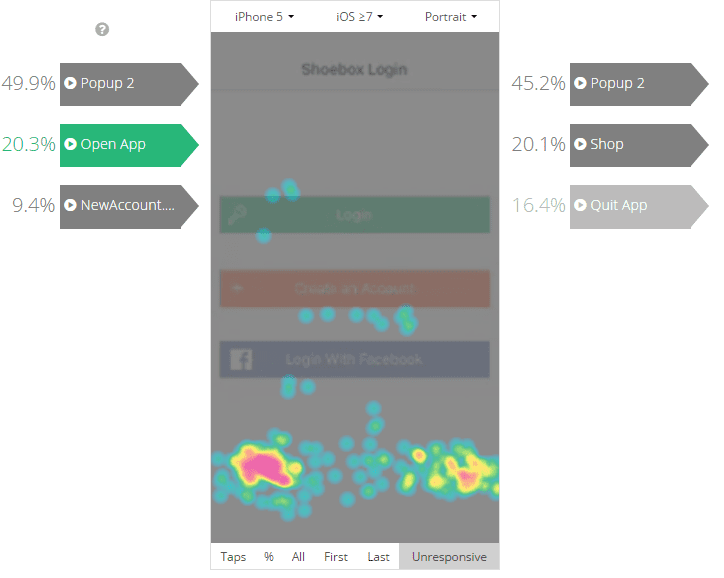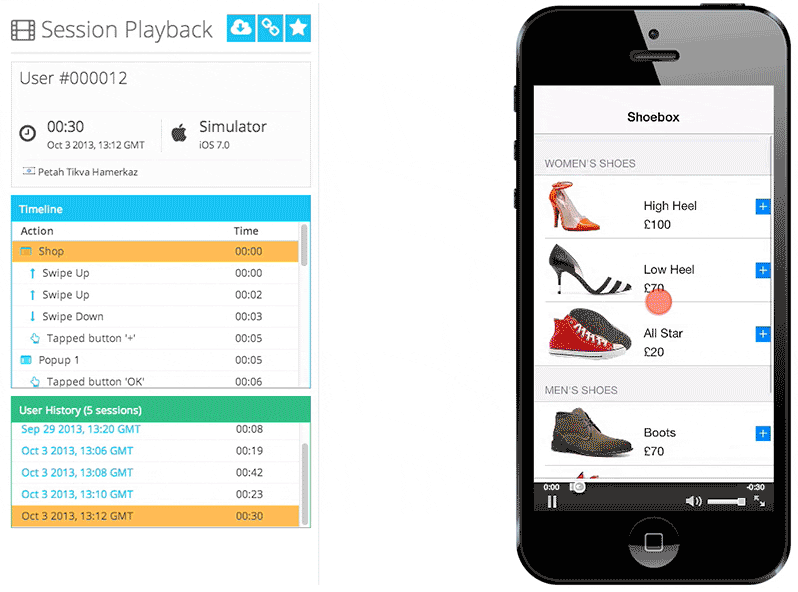Qualitative analytics are the next frontier for cutting edge marketers
It is 2016, and things are not what they used to be. Taylor Swift and Tom Hiddleston broke up, Cristiano Ronaldo actually won something with his national team, and growth hacking has become something of an oxymoron.
Growth hacking, specifically app growth hacking, a term that used to describe doing things differently in order to give your app extra momentum for growth, has been chewed up, washed out and clichéd into oblivion. All the tactics, strategies and methods developers have been using have been thoroughly analyzed and reported, and nowadays – everyone’s using it.
Well, if everyone’s using it, it’s not really ‘hacking’ any more, is it? As if time stopped when we learned how to use social media, word of mouth, or paid-to-free campaigns all with the goal of increasing downloads for our apps. And that really is what the focus of this fatigued approach to app growth hacking was all about – downloads. You'll find countless examples out there, of tactics and strategies that focus on download numbers and download numbers alone. Try this one, this one or this one for size.
But hey – like I said, it’s 2016, and it is time for us to move beyond the focus on downloads. Not just because everyone’s using it, but because people have done research and realized that downloads are not really the (only) metric you should be paying attention to. Even if a lot of people download your app, there is a good chance a large majority will abandon it after 24 hours, leaving you with a handful of faithful prospects.
You also need to focus on those that remain after 24 hours and make sure they actually enjoy using your app. Ultimately, they will become your evangelists, your word-of-mouth marketers, your app testers and your source of growth. So how can you make people stick around for longer? Through awesome user experience, of course. That can be achieved by applying new methods of growth hacking - qualitative analytics.
Welcome to the future.
Qualitative analytics
The very term ‘qualitative analytics’ has a ring to it as if we're talking about some arcane knowledge reserved only for the biggest gurus in the business, when in fact we're talking about a very specific, tangible practice.
It runs parallel with quantitative analytics and complements it by measuring things quantitative has ‘trouble’ with, ultimately filling in the gaps and allowing you to see the full picture. If quantitative analytics measure metrics we can count, such as download number or referrals, qualitative analytics measure things we can’t count and define numbers, like the overall user experience. Basically, quantitative supplies you with the ‘what’ (i.e. 33% of your users dropped off a specific funnel) and qualitative supplies you with the ‘why’ (33% of your users encountered a flawed navigation button).
How exactly does qualitative analytics “fill in” the gaps from quantitative? Specifically, qualitative analytics platforms, such as Appsee, offer touch heatmaps and user recordings, which can display how users are actually experiencing your app. These features allow you to better understand exactly how your users are using the app, which elements they’re having trouble with and why they might quit your app. Consequently, it can help you confidently shape future versions with UI updates or new features you didn’t even know your users needed. This is not information that you can get from beta testers or focus groups. Let’s dive deeper into these unique features and see what they do.
Touch Heatmaps
Touch heatmaps are unique in that they are able to track every interaction the user has with your app, like tapping, swiping or scrolling. It then produces a ‘map’ showing which areas of your app are getting most, and which the least of attention. It does it through color-coding similar to what thermal imaging goggles can do. It adds a layer to your app’s screens, with red dots representing most frequently used parts of the app, and blue ones the exact opposite.
Another important capability is that it spots unresponsive gestures that usually severely hurt the overall user experience and could have your users abandoning the app in flocks. Heatmaps can help you understand if users are ignoring certain CTAs or if there are user interface elements that don’t feel intuitive. It can show you which parts of the screen your users find most interesting, and could prove useful in A/B testing.
Touch heatmaps can help you better understand what your users really want from the app, what works and what doesn't. You can use that valuable information to upgrade the user experience through future updates, and that is the number one driver for growth.

User Recordings
As you probably know by now, people are often not using your app the way you intended, a discrepancy which can lead to a lot of frustration among users and even your app’s demise. If you don’t know how your users are going about your app, which screens they’re having trouble with or why, you won’t be able to effectively hack your app, fix user interface issues and bring new and necessary features.
The best way to understand your users would basically be to look over their shoulders and into their mobile screen as they’re using the app, but that would be impossible. What you can do, though, is watch user session recordings, in real-time, to better understand how your uses are going about the app. You will be able to see which screens aren’t working for them and what problems they’re having. You will learn why certain processes, like account registration or in-app purchases, aren’t being completed – a metric which can prove invaluable.
If your mobile app is a game, you'll be able to understand why some groups are having trouble passing level 23. If it's a shopping app, you'll see why your cart gets abandoned every once in a while. By fixing any detected issues, your app will:
- Be useful to a larger number of people
- Offer a better user experience
Just by having an app that works properly for more people equates to growth. Pair that up with a better user experience for everyone, and you'll gain major momentum in growth – and that's not just in download numbers.

Use all the data you can get
Obviously, no one is saying you should completely abandon quantitative analytics and replace it with qualitative, but this fresh approach can help you round off a complete picture of your product and help you keep moving forward and grow. By using both methods at the same time, you can be unstoppable. With quantitative analytics you can discover pain points in your apps. Then, after identifying them, you can use qualitative analytics to understand the reasons behind these pain points. Qualitative analytics can help you not only increase the number of downloads, but more importantly – the number of active users. And that is how you grow!
So what are you waiting for? Integrate with a qualitative analytics tool and start actually understanding all of the “whys” behind your numbers and how you can make the best user experience possible. The mobile-first 2016 doesn’t wait for those who stay inside the box.

Thanks to John for sharing their advice and opinions in this post. John Sela is the Chief Marketing Officer at
Appsee. John is an authority on lean marketing management and growth hacking with a strong focus on acquisition and retention for tech-oriented products. Whether building communities and marketplaces, mobile acquisition campaigns, guerrilla tactics, lead generation, or quickly penetrating new markets, his reputation persists for surfacing the highest ROI performing channels, and cultivating them into growth machines. You can connect with John on
LinkedIn or
Twitter.





 Thanks to John for sharing their advice and opinions in this post. John Sela is the Chief Marketing Officer at
Thanks to John for sharing their advice and opinions in this post. John Sela is the Chief Marketing Officer at 



